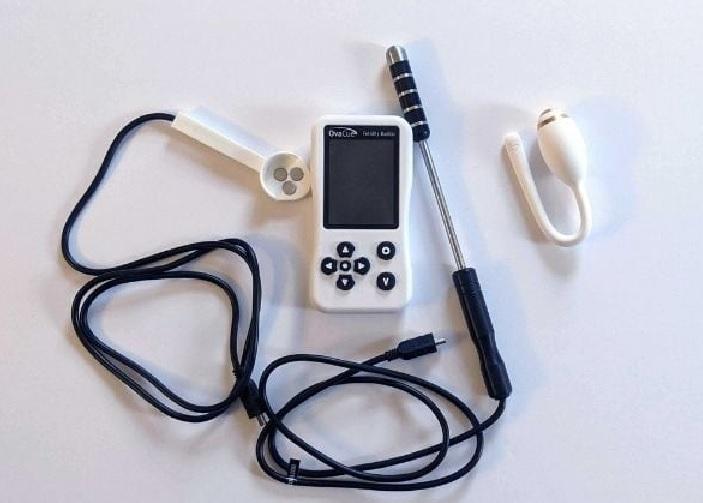Infertility is increasingly prevalent in Europe, affecting millions of couples. This trend is largely due to lifestyle choices, environmental exposures, and societal shifts such as delayed family planning. As a result, the demand for infertility diagnostics devices is on the rise. The European market, expected to grow at a CAGR of 8.80% from 2024 to 2032, is witnessing technological advancements and innovation to cater to the needs of couples seeking fertility support.
Key Drivers Fueling Market Growth
- Delayed Parenthood: More couples are choosing to focus on careers, personal development, and financial stability before starting families, often waiting until their 30s or even 40s to conceive. However, fertility declines with age, which increases the need for fertility treatments and diagnostics. Advanced diagnostic devices enable couples to assess their fertility health earlier and make informed decisions about family planning.
- Lifestyle and Environmental Factors: Dietary habits, sedentary lifestyles, stress, and exposure to environmental pollutants have all been linked to declining fertility rates. For instance, endocrine-disrupting chemicals found in some plastics and personal care products can negatively affect hormonal balance. This has increased the demand for diagnostics to help couples understand how these factors may be impacting their fertility.
- Technological Advancements: The fertility diagnostics market has seen significant technological innovations, including genetic testing, AI-driven data analysis, and advanced imaging systems. These tools enhance the accuracy and effectiveness of infertility diagnostics, providing more detailed insights into reproductive health and improving success rates in fertility treatments.
Challenges and Restraints
- High Costs: Advanced infertility diagnostics and treatments can be costly, posing a financial burden for many couples. This high cost is a barrier, especially in regions with limited insurance coverage or government subsidies for fertility treatments.
- Social Stigma: In some European countries, infertility is still a sensitive topic, which may prevent individuals and couples from seeking treatment. This stigma is more pronounced in certain cultures or regions, leading to underreporting of infertility and limiting the market’s growth potential.
- Regulatory Challenges: The infertility diagnostics market is highly regulated. Each device must go through rigorous testing and approval processes before it can be sold. While these regulations ensure safety and efficacy, they can be time-consuming and costly for manufacturers, potentially delaying the release of new products.
Trending Technologies in Infertility Diagnostics
- Artificial Intelligence (AI): AI applications in infertility diagnostics are revolutionizing the way data is analyzed and interpreted. By utilizing machine learning algorithms, AI can help identify patterns and predict fertility outcomes with greater accuracy. For example, AI-driven sperm analysis tools provide precise measurements and assessments, reducing human error and enhancing diagnostic reliability.
- Mobile Apps and Wearables: Technology-driven fertility tracking apps and wearables are becoming increasingly popular among consumers. These tools allow users to monitor ovulation cycles, basal body temperature, and other fertility indicators in real-time. Wearables with connected apps are helping couples to better understand their fertility windows, and some apps now offer integrations with diagnostic devices, providing comprehensive data that aids in early diagnostics.
- Advanced Imaging Technologies: New imaging devices, such as high-resolution ultrasounds and 3D imaging systems, offer more detailed visualizations of reproductive organs. These technologies are especially useful in diagnosing structural issues, such as polycystic ovary syndrome (PCOS) or uterine fibroids, which can affect fertility. MRI is also being utilized to provide non-invasive and highly detailed insights into reproductive health.
Key Players Shaping the Market
Here’s a closer look at some of the leading companies in the European infertility diagnostics devices market, each bringing unique strengths and innovations:
- Cook Group: Cook Medical, a subsidiary of Cook Group, offers a wide range of reproductive health products, including infertility diagnostic devices. They specialize in devices that aid in assisted reproductive technology (ART) procedures and offer solutions for both male and female infertility diagnostics.
- Vitrolife: With a focus on assisted reproduction, Vitrolife provides a comprehensive range of products used in ART procedures. They offer solutions for every step of the fertility treatment process, from diagnostics to embryo transfer, including specialized culture media for embryos and advanced time-lapse imaging systems.
- Thermo Fisher Scientific: A leader in scientific research and diagnostics, Thermo Fisher offers state-of-the-art genetic testing tools used in fertility diagnostics. Their portfolio includes products that facilitate pre-implantation genetic testing, allowing for the detection of genetic disorders before embryo implantation.
- Hamilton Thorne LTD: Hamilton Thorne specializes in advanced imaging and laser technology used in fertility diagnostics. They produce systems for sperm analysis, motility assessment, and embryo biopsy, helping fertility clinics enhance diagnostic precision and efficiency.
- Esco Micro Pte Ltd: Known for its innovative laboratory equipment, Esco produces high-quality incubators, laminar flow cabinets, and other essential tools used in infertility diagnostics and ART. Their advanced equipment ensures optimal conditions for gamete and embryo culture, supporting successful fertility treatments.
- Genea Limited: This Australian company, with a strong presence in Europe, is recognized for its advancements in fertility technologies. They offer a suite of products and technologies, including their signature Gavi™ automated vitrification platform, which streamlines the freezing process for embryos and gametes.
- IVFtech APS: A Denmark-based firm, IVFtech is known for its laboratory equipment, including incubators, workstations, and heating stages tailored for ART. Their products are widely used in fertility clinics and research institutions across Europe.
- Fujifilm Irvine Scientific: Fujifilm Irvine Scientific provides media used in cell culture for IVF procedures. Their extensive portfolio includes culture media that support gamete and embryo development, helping fertility clinics enhance the success rates of ART.
Key Features of the Market Report
A comprehensive report on the European infertility diagnostics market covers several essential aspects:
- Patent Analysis: Patent analysis provides insights into technological innovations and trends. By tracking patents, companies can identify emerging technologies and potential competitors. In infertility diagnostics, recent patents include advancements in AI-based sperm analysis and next-generation genetic testing kits.
- Funding and Investment Insights: Increased funding in the infertility diagnostics market signals investor interest and drives research and development. Notable funding rounds and venture capital investments are helping companies like Vitrolife and Hamilton Thorne expand their product lines and introduce cutting-edge technologies.
- Partnerships and Collaborations: Partnerships between diagnostics companies and fertility clinics or research institutions are essential for product development. Collaborations help companies share resources, accelerate product development, and improve access to infertility diagnostics across Europe.
Regional Analysis
Western Europe is the largest market for infertility diagnostics devices, driven by countries like Germany, France, and the United Kingdom. These nations have a high prevalence of infertility, advanced healthcare infrastructure, and a greater focus on healthcare investment. Meanwhile, Eastern Europe is catching up as awareness grows and healthcare systems improve. Government initiatives and increased healthcare spending are expected to drive demand in regions like Poland and the Czech Republic, presenting growth opportunities for market players.
Future Outlook
The European infertility diagnostics devices market is poised for growth, with a strong focus on innovation and accessibility. Key trends to watch include:
- Broadening Adoption of AI: AI will play a more significant role in fertility diagnostics, improving the accuracy and speed of diagnostics. Machine learning models will continue to evolve, aiding in personalized treatment plans and enhancing the effectiveness of ART.
- Rise of Home-based Fertility Testing: With the increasing popularity of home-based fertility testing, diagnostic devices that integrate with mobile apps and provide remote monitoring capabilities are expected to gain traction. This trend is expected to make fertility testing more accessible and convenient, particularly in rural or underserved areas.
- Increased Focus on Cost-effective Solutions: As healthcare systems look for cost-effective solutions, companies are developing affordable diagnostics that can cater to a wider population. These solutions are expected to include self-testing kits and portable devices that offer accurate and reliable fertility diagnostics without the need for extensive laboratory facilities.




